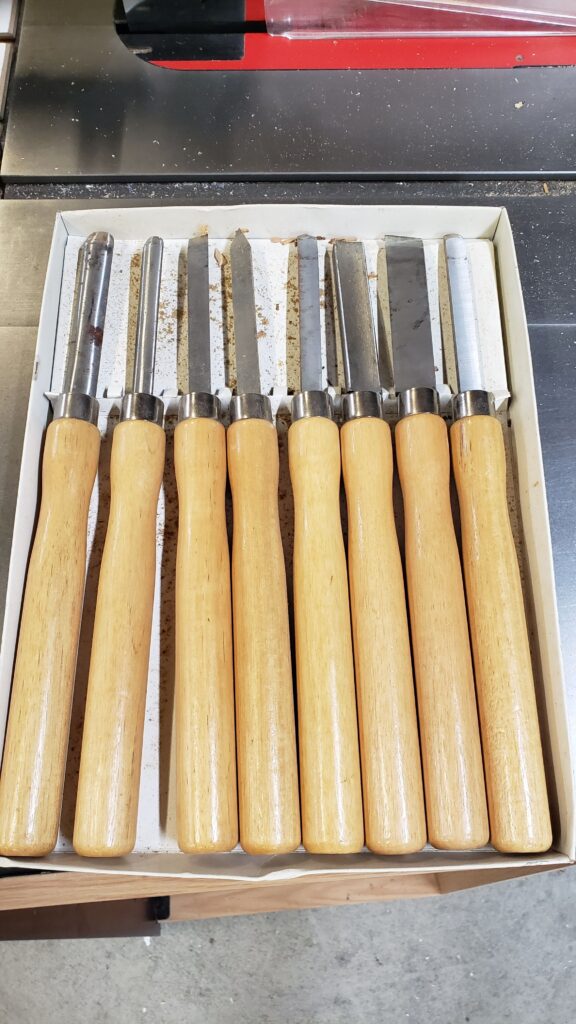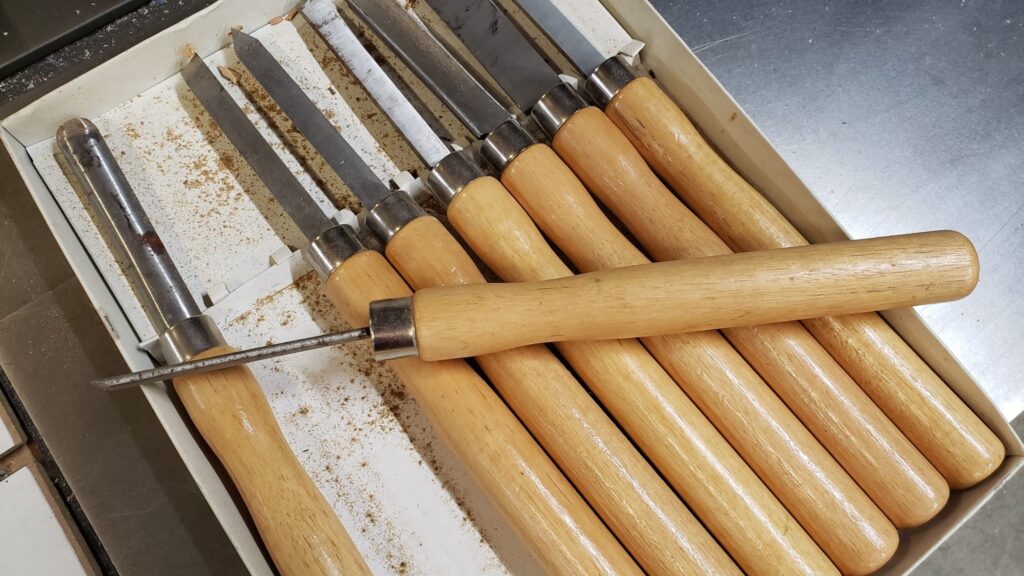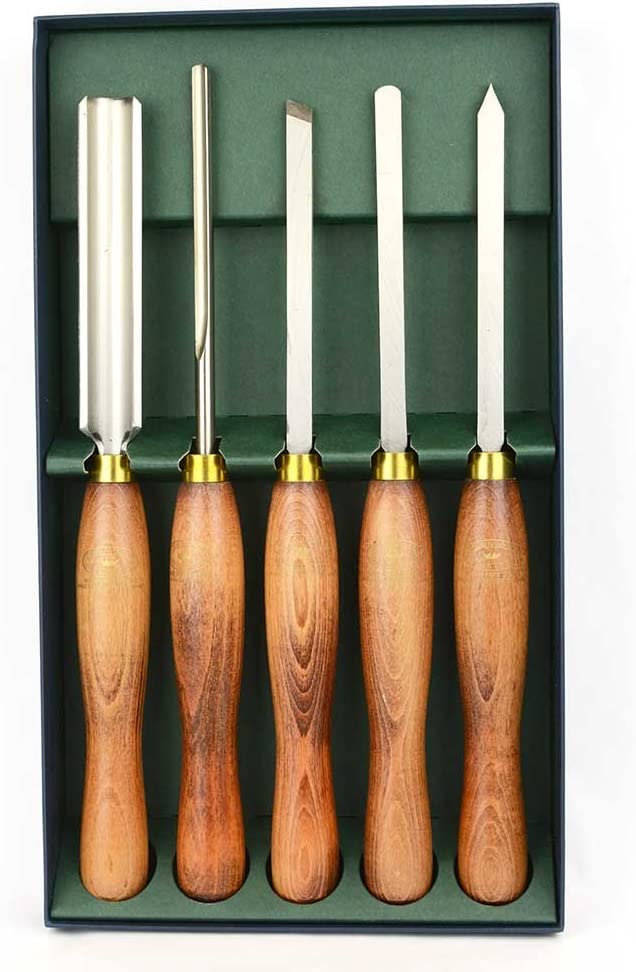About 20 years ago, Marisa and I went to a woodworking demo at a nearby woodworking store. At this Demo, many tools were being displayed and demonstrated. Among them, Dick Sing was turning Christmas ornaments on a Jet 1236 lathe. His turning was so fluid and effortless. He turned an ornament with a captive ring in about 10 minutes. We were awestruck. Marisa turned to me and said “You need one of those.” We left with a Jet tablesaw, a Jet jointer, and, a Jet 1236 Lathe.
Now I know that by the title of this article, many of you are expecting a review of some decent but inexpensive turning tools. Sorry to disappoint you, but it is not. On the contrary, I am going to discuss the cheap sets of tools often included with many lathes. You know the ones, cheap wooden handles with short pieces of carbon steel sticking out of them. This article is a plea to manufacturers to stop including these with their lathes.

Cheap Lathe Tools
When I got the lathe home, and all set up, and after reading some books on basic turning, I mounted a chunk of wood to the included face plate, set the speed to low, and started it spinning. As I presented the cheap gouge to the spinning block, starting with rubbing the bevel, and slowly drawing back until the edge met the wood, and BAM! It caught that tool a few times and about beat me to death trying to maintain my grip on that tool.
I hung up that tool and grabbed the skew. That was a mistake. That caught even worse than the roughing gouge. I eventually tried all of the tools, practiced sharpening them and trying again, but couldn’t turn anything. One mild catch actually bent one of the gouges. How did Dick Sing make it look so effortless?

Bent Gouge
At this point, I hung up the tools, buried the lathe on the side of the garage shop. It would be over a year before I would try again. On Valentine’s day of 2004, Marisa sent me to a pen turning demo at another woodworking store. I left there with a nice set of Crown HSS turning tools.

Crown Turning Tools
With a renewed sense of confidence, I decided to try pen turning. With the new HSS tools, and a cocobolo blank mounted on the mandrel and on the lathe, I presented the bevel to the blank. Slowly drew it back until the edge met the wood, and …
It TURNED! Before long, shavings were effortlessly peeling off the blank, as it turned perfectly. That was such a confidence builder. The pen came out beautifully.
In part 2 of this series, I will be sharpening up those tools and putting them to the test to see if 20 years of experience trumps a crummy tool. As the old saying goes, a poor craftsman blames his tools. So we shall see.

